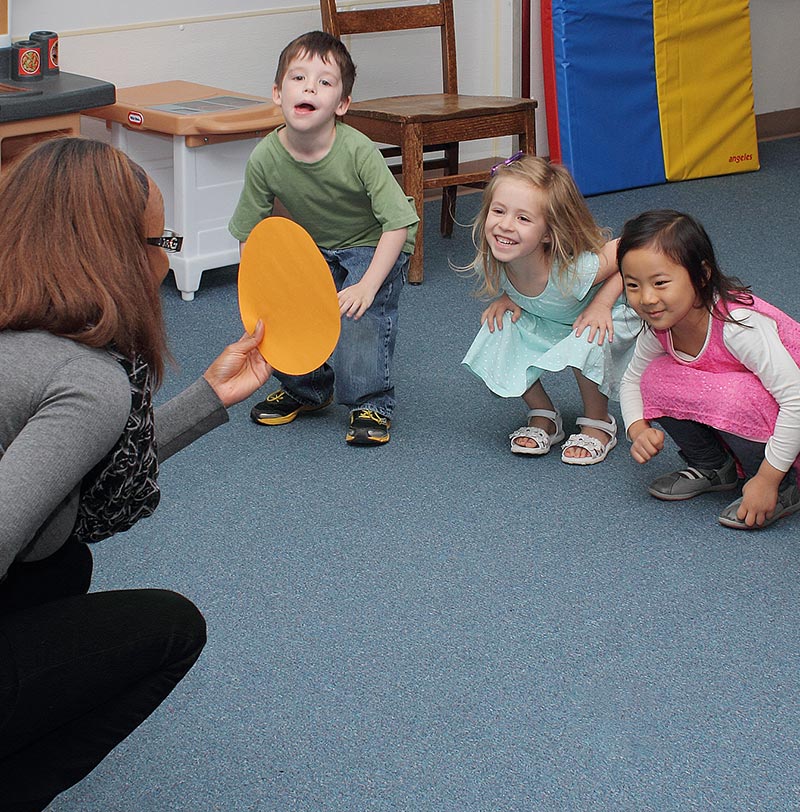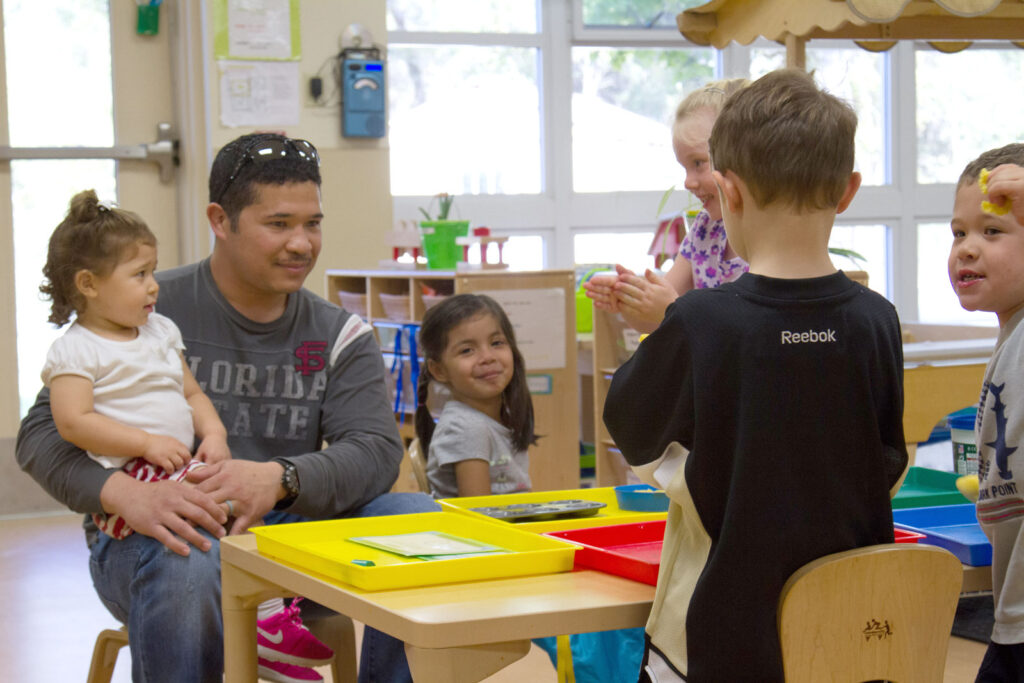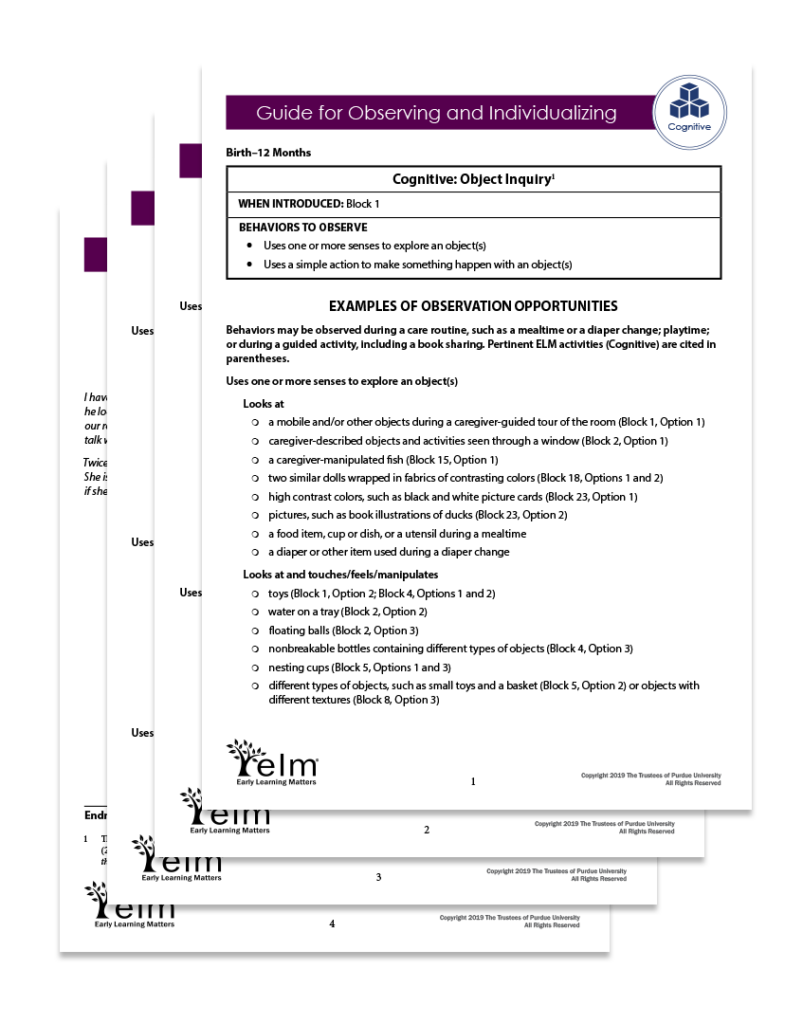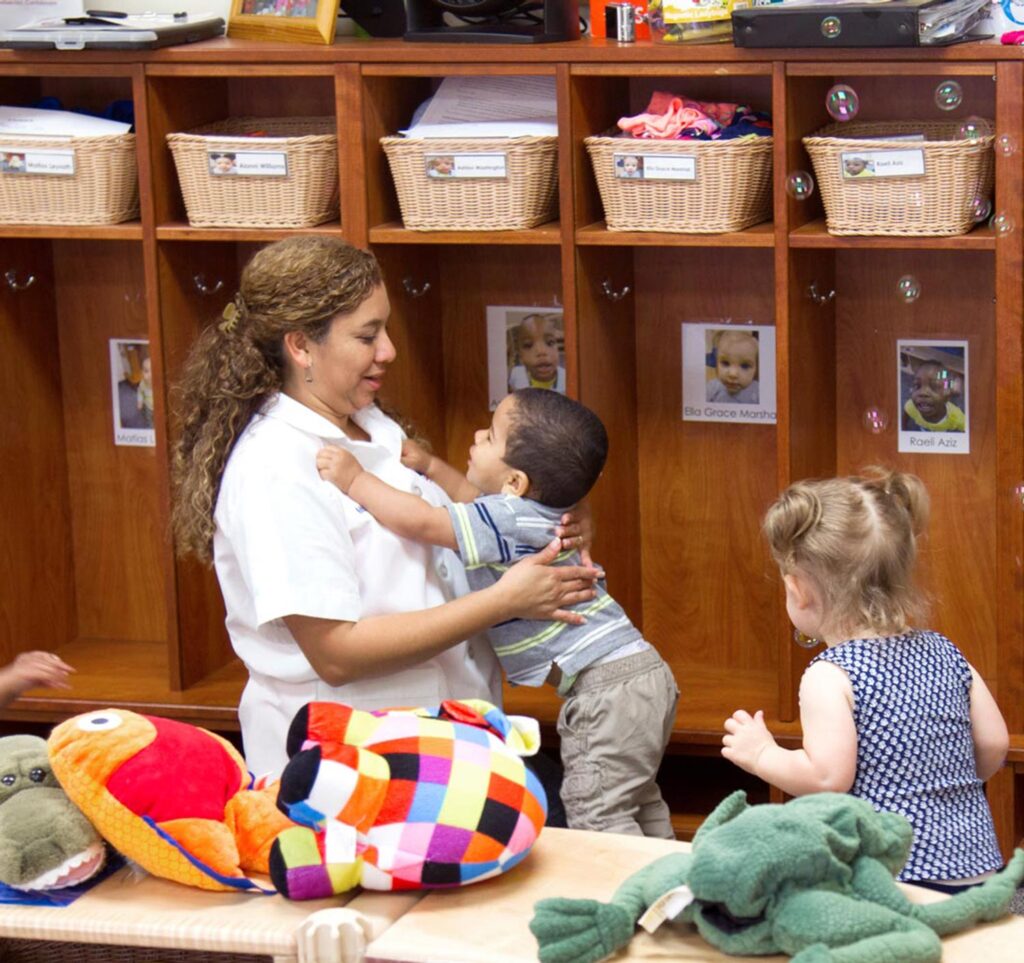Activities are purposeful in the content, sequence, and approaches to providing a solid foundation for success in school and life.
Each ELM activity plan offers flexibility for ensuring children engage in learning that is tailored to their current understandings and abilities.
The ELM Curriculum is generous in the amount and quality of support for skills that bolster positive outcomes. Activities build on the power of frequent and increasingly challenging experiences with emerging skills.
The children in the adjacent picture are playing Orange Circle, Purple Circle, one of many different types of evidence-based practices that the ELM Curriculum offers to promote self-regulation. Orange Circle, Purple Circle is similar to the popular Red Light, Green Light game.
Intentional: The activity helps children build skills in paying attention, remembering, and engaging in self-control. It supports both physical and cognitive development.
Meaningful: The classroom staff member set the rules of the game to accommodate the participating children’s current and emerging skills. The activity plan offers adaptation ideas for children who may need additional supports or extra challenge.
Plentiful: Like many ELM activities, self-regulation games are offered often because frequent practice is a proven way to develop new skills. More challenge is added to a game when children are ready.


Each activity plan is designed to support the development of one or more foundation skills promoted in the ELM Curriculum. Plans are developmentally sequenced across a 50-week period. Each plan describes the activity’s goal, needed materials, format (such as one-on-one or small group), and key words or concepts. Each plan also includes:
Practical ways to promote ELM’s foundation skills during routine parts of a classroom day are offered in ELM’s two comprehensive User Guides, one for working with infants and toddlers and one for working with preschool-age children. The routines include diapering and bathroom times, meal and snack periods, and transitions, among others. See a User Guide’s “Building on the Activity Plans” section in each description of areas promoted by ELM.
ELM also provides brief parenting tips in a resource known as Readiness Starts Early. The tips suggest ways to reinforce and extend children’s learning related to activity plans scheduled for the same week in the ELM Curriculum. The tips for families of infants and toddlers age organized by three child age ranges: birth to 12 months, 12-24 months, and 24-36 months.
The one-page set of tips may be posted in a classroom, distributed as a paper handout, or viewed on smart phones.


There are guides for conducting focused observations of a child’s progress with a foundation skill. Each guide describes observation opportunities and suggests ways to use observation information for creating individualized follow-up learning opportunities. Many guides offer examples of entries for a child’s portfolio.
There also are tools for assessing preschool-age children’s progress with counting and letter knowledge. These assessments are embedded in the curriculum for ease in usability. They are brief and engaging. The tools include suggestions for developing individualized follow-up learning experiences.
The ELM Curriculum’s planning forms give attention to individual children. There are Snapshot of Child Progress forms for keeping track of observations and assessments.

ELM’s User Guides are packed with information and examples of how to successfully use the curriculum. Each Guide summarizes research on what’s important to promote during the early years and describes effective classroom practices. There are sequence charts of skills and learning goals emphasized across a 50-week period.
Each User Guide is rich in professional development opportunities. There is background information on each skill promoted by ELM. For example, there is a description of signs of distress in children written by a child and adolescent psychiatrist for the ELM Curriculum User Guide: 3-5 Years. There also are lists of actions that staff may take to strengthen their understanding of each area. Staff are encouraged to take a close look at how an activity in one area, such as physical development, can also promote children’s understanding of another area, such as social development.
Descriptions of each foundation skill in the two User Guides include a summary of pertinent NAEYC program standards and accreditation criteria. There are links to corresponding content in Virtual Laboratory School courses.
ELM also provides six online training lessons on key parts of the curriculum, such as ways to make the most of activity plans and approaches to effectively supporting differences in children’s development and learning.
Forthcoming videos feature child development experts and examples of effective classroom practices focused on areas promoted in the ELM Curriculum.
There are age-appropriate checklists for observing classroom staff use an ELM activity. There are samples of a completed checklist and how the checklist can be used in a coaching session with classroom staff.
